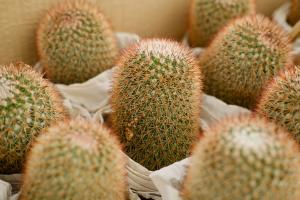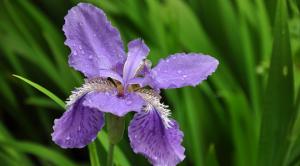How do Plant Biologists Use Water Potential?
Water is an essential molecule for plants. It is required to carry out photosynthesis and to transport nutrients and minerals from the soil. As such, plant biologists have made studying water potential an integral part of their research. Water potential is defined as the measure of free energy of water molecules in a substance. In simpler terms, it is the measure of the ability of a plant to take up water from its surroundings. It plays a vital role in determining the physical and chemical processes that occur in plant cells.
Why is Water Potential Important?
Water potential is a crucial factor in the growth and development of plants. This is because plants need water to sustain their physiological processes. The movement of water within and outside the plant is crucial for the uptake of minerals, carbon dioxide, and other essential nutrients. Understanding water potential is also important for predicting and managing plant water stress, especially under drought conditions. It helps plant biologists to determine the best irrigation strategies to apply, the right time to water crops, and the most suitable plants for a given location.
How do Plant Biologists Measure Water Potential?
Plant biologists use various techniques to measure water potential. One of the most widely used methods is the pressure chamber technique, which involves placing a plant inside a sealed chamber and applying pressure to the leaves. The pressure is then gradually released, and the amount of pressure required to stop water from flowing through the plant is measured. This value provides insight into the plant's ability to take up water from its surroundings.
Another technique that plant biologists use to measure water potential is the thermocouple psychrometer. This method involves placing a thermocouple and a wet bulb in contact with the leaf surface. The temperature difference between the two sensors is recorded and used to calculate the water potential of the leaf. The results obtained from this method are relatively fast and can be used to monitor changes in plant water potential over time.
Applications of Water Potential in Plant Biologists
Plant biologists use water potential data to determine the best irrigation strategies for different crops. They use information on water potential to determine the soil moisture content and the amount of water that different crops need. This helps them optimize their irrigation schedules to ensure that each crop receives the right amount of water. Additionally, water potential data is essential in predicting plant water stress, especially under drought conditions. This helps farmers to prepare and manage crops for drought periods by selecting drought-tolerant species.
Another application of water potential in plant biology is in the study of plant resistance to water movement. By measuring water potential, plant biologists can analyze the mechanisms that plants use to move water within and outside their cells. This helps them understand how different plant species handle water stress and how water stress affects plants' growth and development.
Conclusion
Water potential is a critical parameter in plant biology that has numerous applications. Plant biologists use techniques such as the pressure chamber and thermocouple psychrometer to measure this parameter. The information obtained is valuable in determining irrigation strategies, selecting drought-tolerant species, and understanding how water stress affects plants. In summary, understanding water potential is essential in maximizing crop productivity and ensuring sustainable practices in agriculture.

 how many times do yo...
how many times do yo... how many planted tre...
how many planted tre... how many pine trees ...
how many pine trees ... how many pecan trees...
how many pecan trees... how many plants comp...
how many plants comp... how many plants can ...
how many plants can ... how many plants and ...
how many plants and ... how many pepper plan...
how many pepper plan...




























